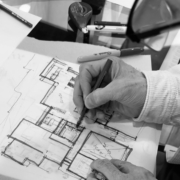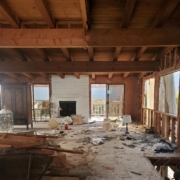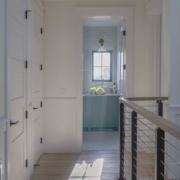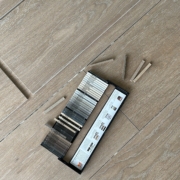How To Narrow Down Your Search for the Right Custom Home Builders
Building your dream custom home can be one of life’s most exciting events! As one of the biggest investments one could make, it is crucial that you choose the right custom home builder to bring your vision to life.
However, with so many builders to choose from, how do you narrow down your search and find the right match for you and your project? If you want to ensure an efficient design/build process, here are four factors you should consider when narrowing down your search for the right custom home builders.
Compare Estimates
One of the first and most important steps in finding the right architectural design firm is to compare estimates and budgets. As you gather quotes from different builders, it may be tempting to choose the lowest price. However, it’s important to carefully evaluate the breakdown of the estimate and understand what is included.
A low initial estimate may lead to additional expenses down the road, ultimately causing you to exceed your budget. These estimates, depending on how thorough they are, typically indicate how detail-oriented and transparent a design/build firm will be throughout your project.
When comparing estimates, it’s also important that you have a clear idea of your budget and priorities for the project. Communicate your budget to the design/build firm and ask for recommendations on how to achieve your vision within your budget. A reputable custom home builder should be able to provide a detailed estimate and work with you to meet your budget requirements without compromising quality.
Verify Licensing and Insurance
Before committing to any custom home builders, it’s crucial to ensure that your chosen builder is fully licensed. California home builders are required to be properly licensed, so choosing a custom home designer without the proper certifications can burden you with legal and financial liabilities as well as put the quality of your home at risk.
Insurance is equally important as it protects both the builder and homeowner from liability for any accidents or damages that may occur during the construction process. To protect yourself and ensure your project goes smoothly, your chosen architectural design firm should be fully and adequately insured.
Any reputable home designer will have no issue providing proof of their license and insurance. You can also verify this information by checking with your local licensing board online. Searching for the company’s name and “license” can also help bring up any complaints or lawsuits that former clients have against the company that they haven’t disclosed.
Ensure They Have a Warranty
Any good custom home builder will stand behind their work and offer a comprehensive warranty. A warranty guarantees that the builder will rectify any defects or issues that may arise with your home within a specified time frame, giving you peace of mind if anything goes wrong.
When comparing custom home builders, ask about each company’s warranties and service promises. Some may offer warranties for a certain timeframe, while others may offer lifetime guarantees. Make sure you read the fine print and understand the full coverage and limitations of the warranty in case anything goes wrong after the job is done. Additionally, inquire about their service promises and how they handle any post-construction issues.
Trust Your Gut
As much as narrowing down your search for the right custom home builder involves comparing estimates and verifying licenses, it’s also essential to trust your gut. Many high-quality architectural design firms will meet the above qualifications, so you may need to consider your personal experience with each firm to make your final decision.
Your personal interactions with the custom home builders will give you a sense of how they will work with you throughout the project. They should have a professional and organized approach when discussing the project details, and they should always be happy to answer any questions you may have. It’s vital that you have open and clear communication with your chosen architectural design firm, as building a custom home is a collaborative effort. If you feel at all uneasy or uncertain about a certain builder, trust your instincts and continue your search for the right one that makes you feel comfortable and confident.
If you’re searching for a truly luxury custom home design/build experience, C&C Partners is the premier choice. We offer unmatched and unwavering customer service, paired with exceptional craftsmanship that guarantees you’ll love your custom home for decades to come. During every stage of the custom home design process, your vision and budget are kept at the forefront, exemplifying the client-centric approach that has helped us become one of the premier luxury home builders in Southern California. We’ll work with you one-on-one, ensuring that you’re comfortable and confident throughout the design/build process and guaranteeing your dream home comes to life. If you want to experience the C&C Partners difference for yourself, contact us online or give us a call at 310-322-0803 today.











